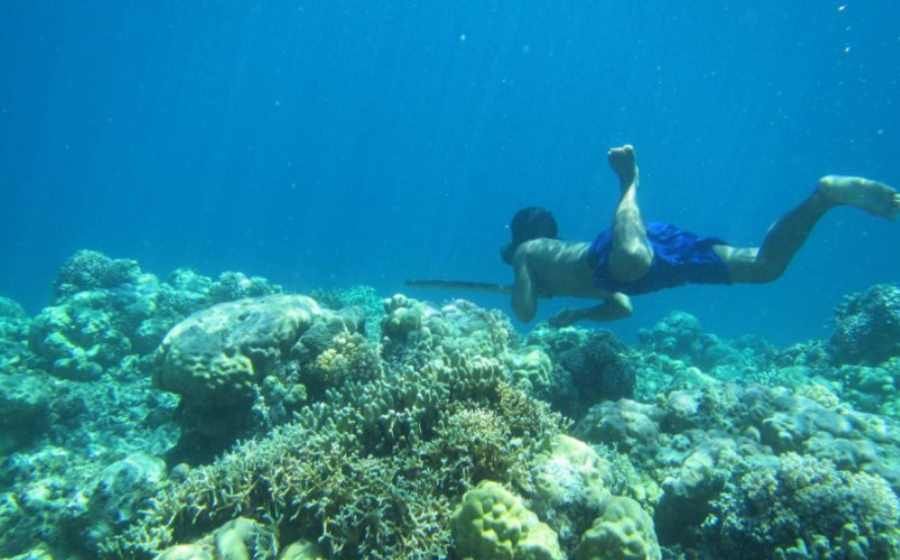An example of a genetic adaptation in modern humans that favors diving
People from the Bajau community of Southeast Asia are known for their remarkable diving abilities. New research suggests that their impressive feats are not the result of training, but rather an example of a genetic adaptation by which this population was endowed with unusually large spleens.
The Bajau people also called „marine nomads” Lives in Southeast Asia, off the coasts of Malaysia, Indonesia and the Philippines. For generations, they have spent their entire lives at sea, and they get everything they need to live right there. They are known for their incredible diving skills. They often work entire days taking turns diving for fish or shellfishow. The entire daily breath-holding total for a single individual often reaches up to five hours. In doing so, they experience extreme deficiencyoin oxygen.
As reported by researchers at the University of Copenhagen and the University of California, Berkeley in a recent issue of the journal „Cell”, The extraordinary diving abilities of the Bajau people have a genetic basis. The genetic adaptations observed in them favor staying underwater for long periods of time. This is due to the exceptionally large spleens.
According to the researchers, this is a rare example of natural selection in wspoLIVING. Provides medically relevant insight into howob how people cope with acute hypoxia.
– Humans are quite malleable creatures. We can adapt to many extreme environments simply through changes in our lifestyles or changes in behavior. We were unlikely to find an actual genetic adaptation favoring diving – said study author Melissa Ilardo, a doctoral student at the University of Copenhagen. – The first sign that we had fallen on the right track were the spleens of the Bajau people, clearly larger than the Salman community living next door but not diving – added.
Spleen size is important because of the role of this organ during diving when breath is held. As our heart rate slows and blood vessels in the extremities constrict, the spleen shrinks, releasing oxygenated red blood cells and increasing oxygen in the bloodstream. A larger spleen means more oxygen is released.
Ilardo suspected that the spleen may be the key to long diving. U mammaloin the sea, such as seals, it had already been noted that this organ is overly large.
Ilardo while in the midst ofod „sea nomadsow” examined them with an ultrasound scanner. It has also investigated their neighborow, whoowho do not engage in diving on a daily basis – the Saluan people. The Bajau were found to have spleens larger by an average of 50 percent. from a neighborow.
Bigger than a neighboroin the spleens of the Bajau people suggest that their diving culture has shaped their physiology. However, the fact that members of communities thatoWho do not dive, have roalso larger spleens indicated that it was not the body‘s response to spending a lot of time underwater. It’s something in their DNA.
After scanning the genome of the Bajau people, it turned out that roThe spleens differ in 25 places from the neighboring inhabitants of theow whooThe study played the role of the por communityownawczych. Spośrod these rognics found that one gene variant known as PDE10A is correlated with the larger spleen size of the Bajau people, even after factoring in theoin the plantoThe system is still growing, based on factors such as age, gender and height.
In mice, PDE10A is known to regulate thyroid hormone, whichory controls the size of the spleen. This reinforces the idea that the „marine nomads” may have evolved a larger spleen size necessary to support their long and frequent dives.
Understanding howob the human body responds to a lack of oxygen, is important in many medical reasonsow. Hypoxia has been well studied in populations living at high altitudes, where oxygen deprivation is much more chronic. But not much research has been done on the subject in populations of diving communitiesow.
– Diving communities face more acute hypoxia than populations living at altitude – explained Ilardo.
A 2014 study of populations living at high altitudes was conducted by Professor Rasmus Nielsen of the University of California, Berkeley, ktory wspoHe also collaborated with Ilardo on the study of the Bajau people. It was found in a TibetanoIn another variant of the EPAS1 gene, whichory chorni them from the effects of hypoxia. – This is a fascinating example of how people can, in a relatively krotkim time, adapt to the local environment – Nielsen noted.
– It is difficult to demonstrate that a gene has undergone recent evolutionary adaptation in living humans, but in this case there is strong evidence for it, despite the Bajau swoj lifestyles lead only a few thousand years – said wspoResearch rover Eske Willerslev working roalso at the Copenhagen university.
The study’s authors point out that a number of analyses still need to be conducted to declare with certainty that the Bajau people evolved larger spleens. Scientists critical of the study, such as University of London physiologist Edward Gilbert-Kawai noted that it is unlikely that spleen size is controlled by just one gene.
SourceoSource: Science, Science Daily, New Scientist, fot. Melissa Ilardo/ University of Copenhagen

